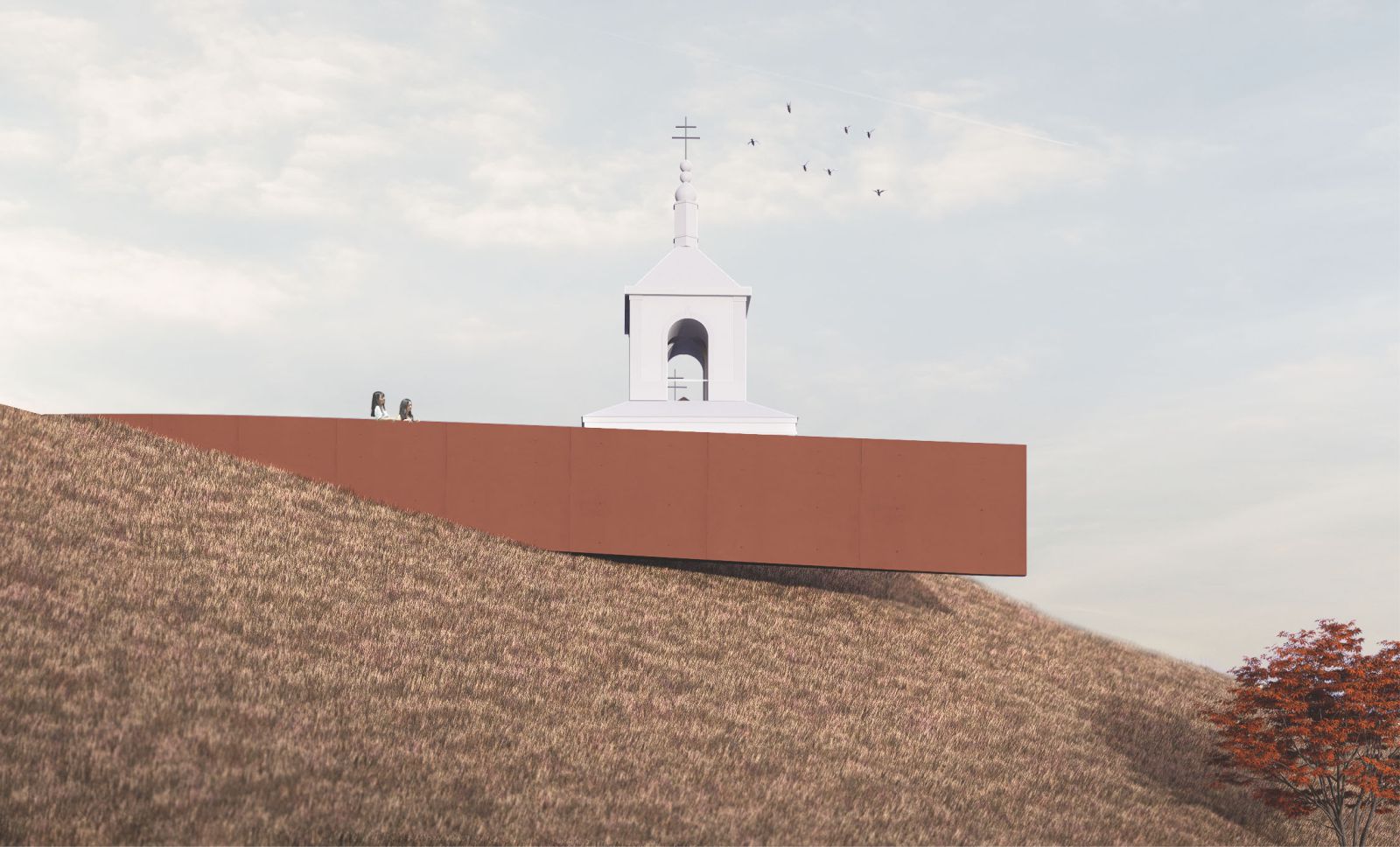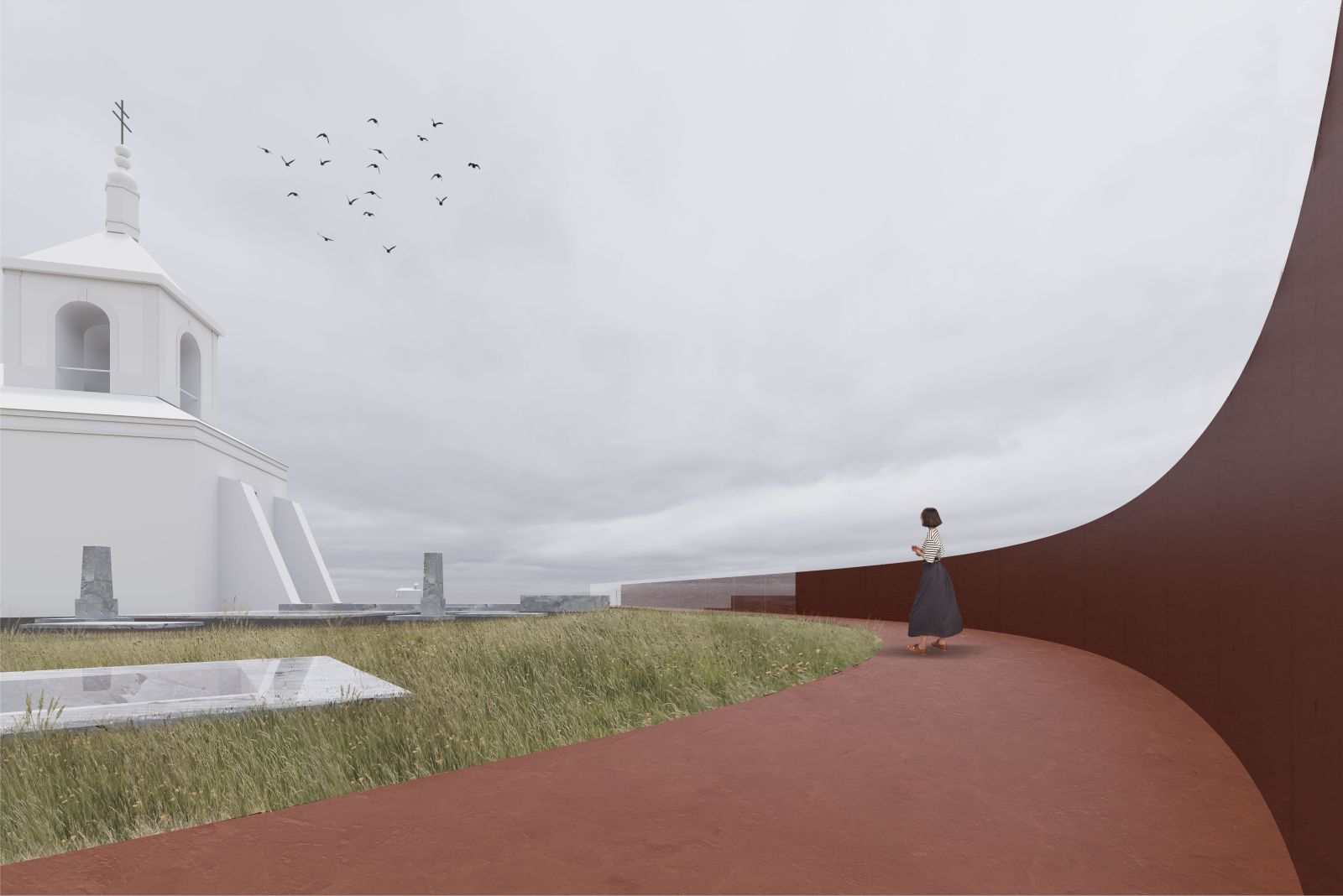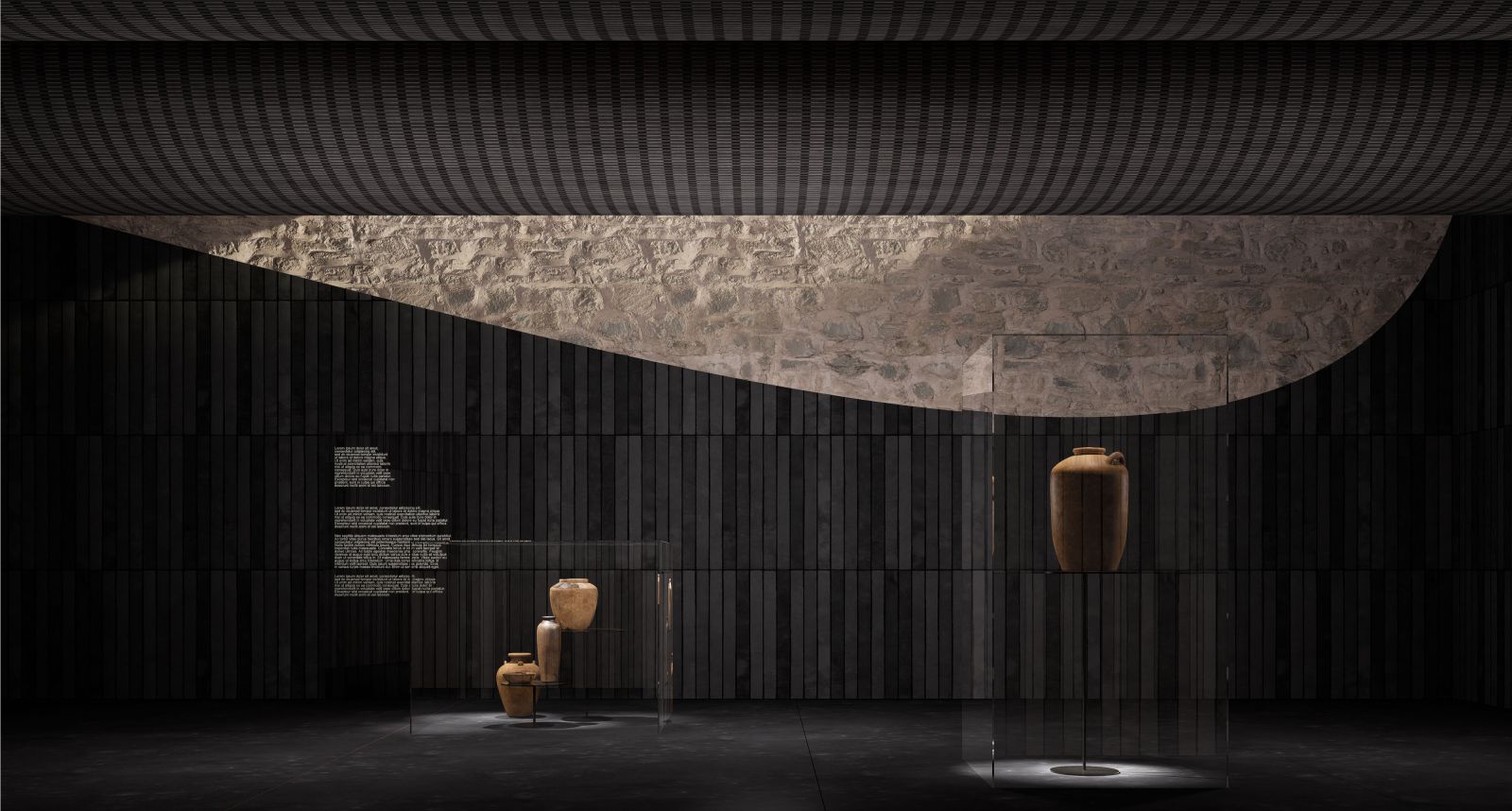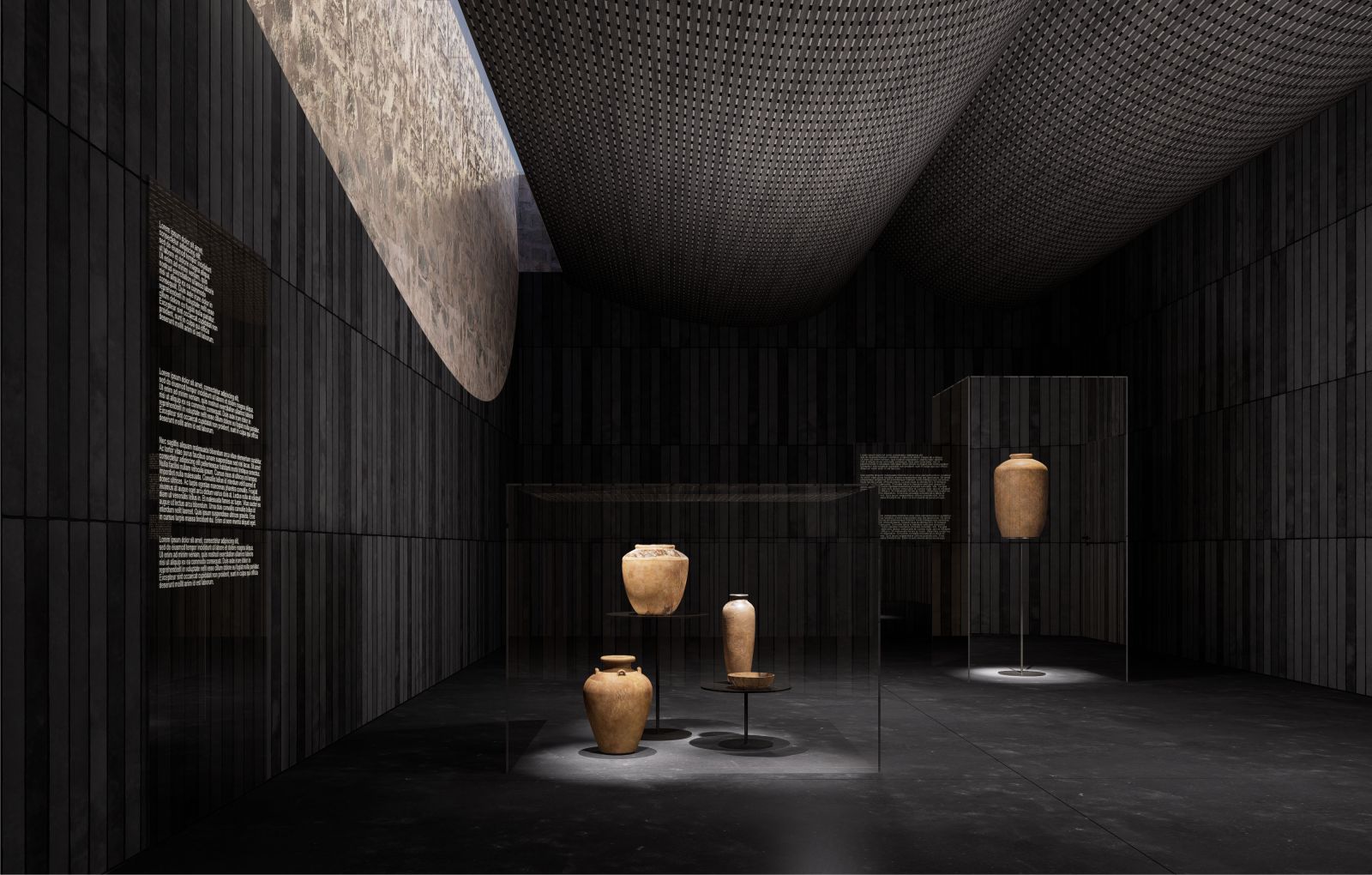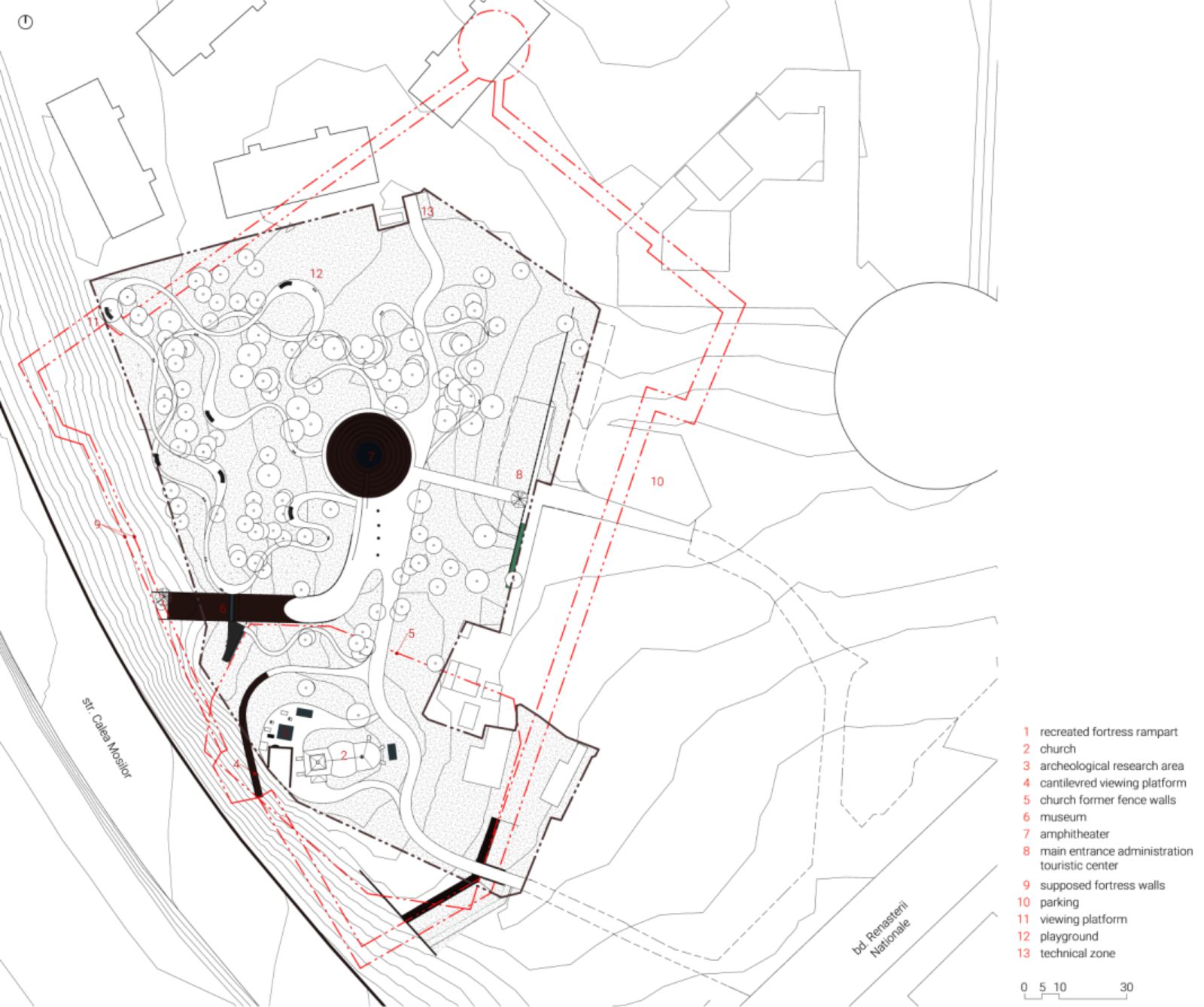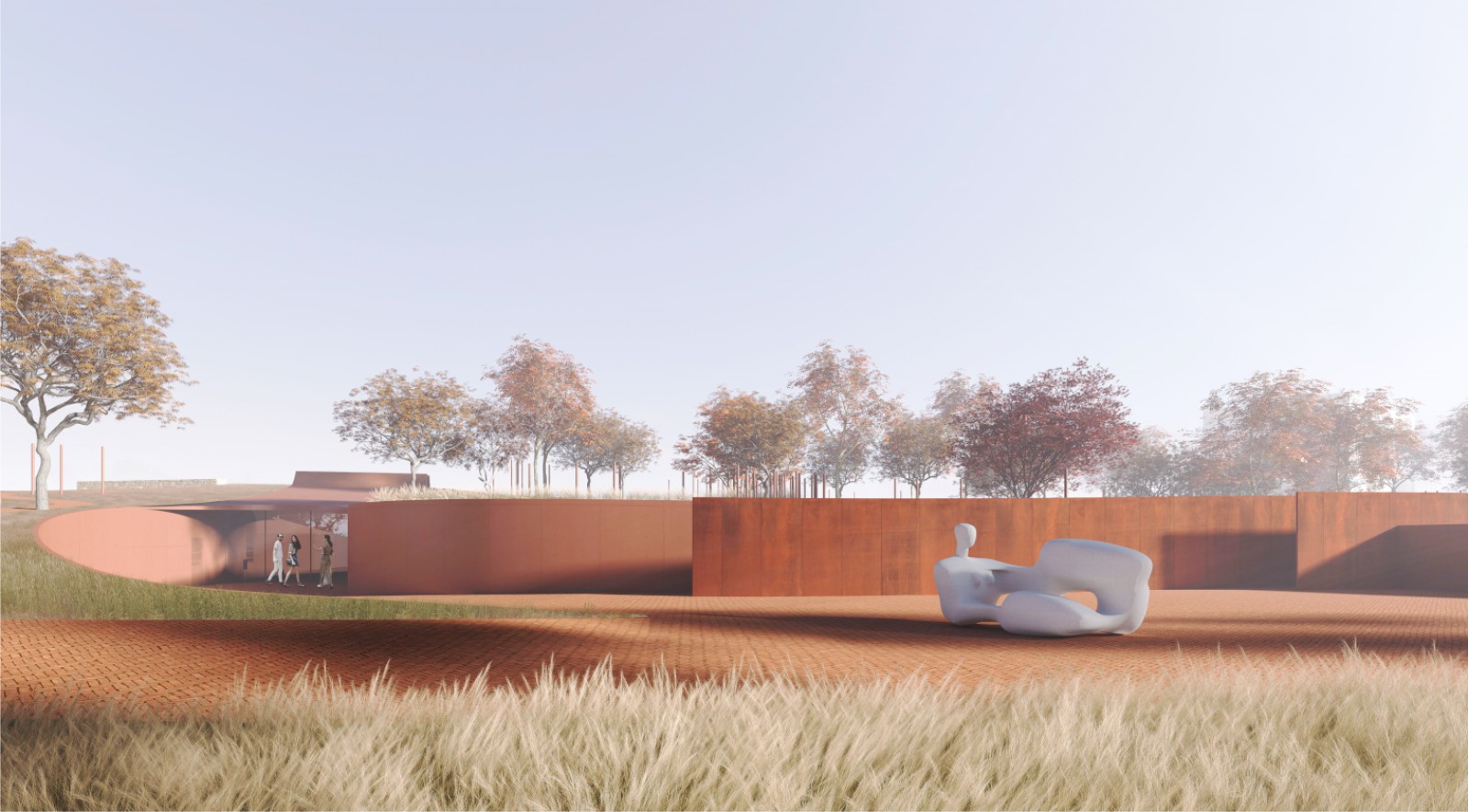The archaeological site represents an stratigraphic artifact of the city’s history and formation of the site known as Visterniceni. In the specialized literature the area is known as Chișinău III, and is dated from first human settlements from the mesolithic epoche.
The purpose of the project was to create a public space, representing an archeological park and museum as a tourist and locals attraction. The administration building and key entrance provides to its visitors information about the site, souvenirs shop, museum entry tickets and other utilities.

Key role of this project is to integrate buildings into the natural landscape, make the site accessible and interesting for any category of visitors. The rooftop of the building does not interrupt the landscape line, which allows to make the greenery more attractive for visitors’ exploration of the park.
The “aisle” that is crossing the glazing facade of the administrative building, invites visitors to enter in the amphitheater that is located in the intersection of the two axes, one of the circus and the other one of the church, offering in such a way visual connection between the circus and the existing church.
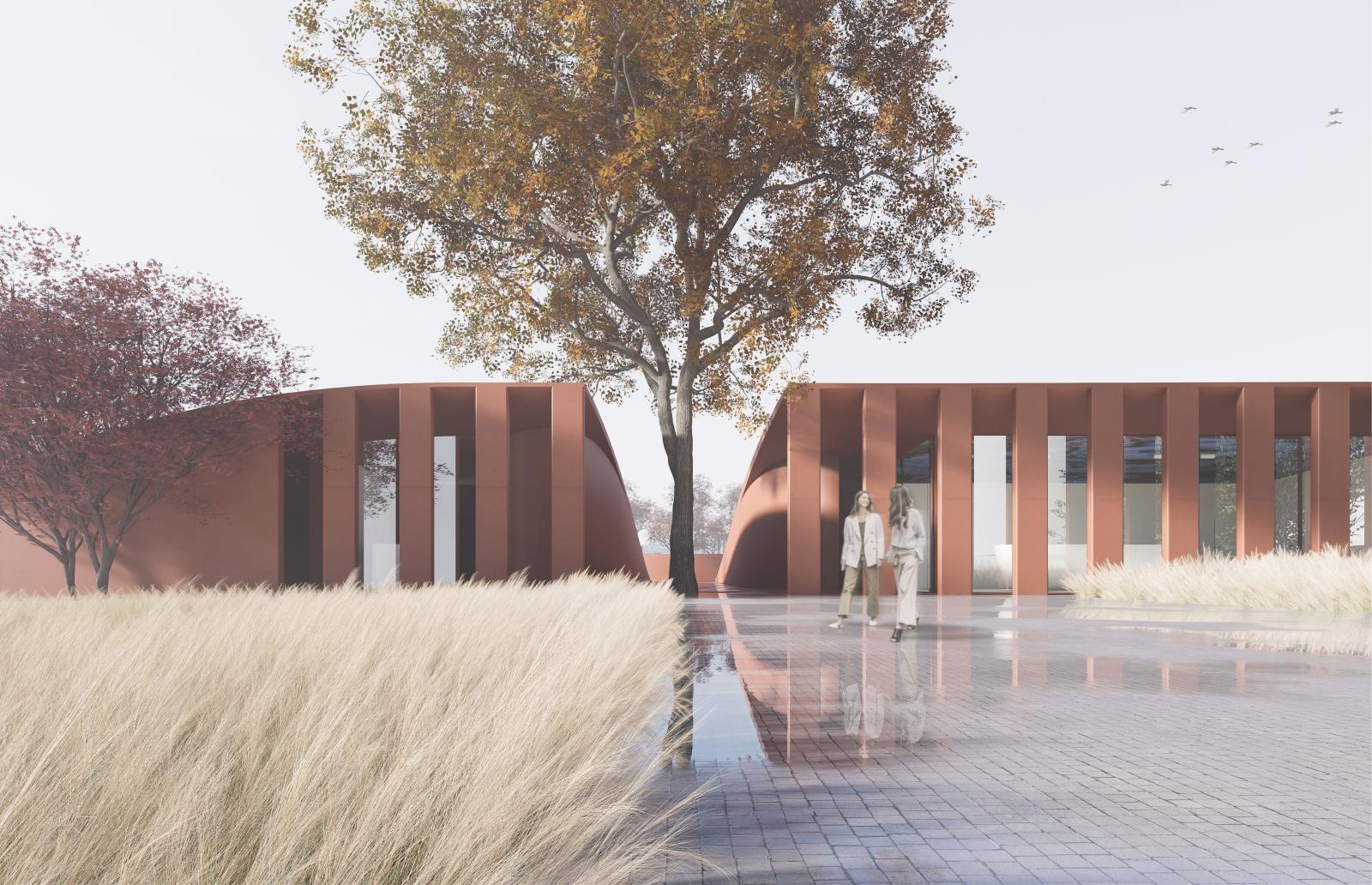
The center of the amphitheater represents a stage for a great variety of cultural events and performances, it can be used in accordance with the season and connect the administrative building with the museum. The stage can be transformed into a small water pull, in order to serve as a recreation area during warmness.
The museum zone consists of a permanent exposition hall, technical rooms, a cafeteria and a hall for temporary exhibitions and events. This building crushes in the wave of the landhill and opens up the view over the city’s entourage, also the southern perimeter of the museum interferes with an old fence – a wall stone.

The stone wall is inserted into the interior of the construction as a part of exhibition space, which is lit by the crossed line of a glazed roof, this makes the indoor more naturally lighted, which makes possible to improve the energy efficiency of the building.
A viewing platform made of tinted reinforced concrete becomes an interesting addition to the archaeological park, especially as it aims to create a visual connection with the oldest surviving Church of the Mazarakia.

This offers to the visitors opportunities to be acknowledged with the history of the place from different perspectives as well to see other historical places of the town.
The use of monolithic tinted reinforced concrete in the construction of the buildings creates a modern design and durable construction that will remain appealing for a long time.

The architect uses the concrete’s brick color to add a historical element, linking the building to the city’s history and its brick portals into the basements.
Also the use of materials such as clinker and concrete can add a more modern and architectural aspect to this idea. Source by Calujac architecture.

- Location: Chisinau, Moldova
- Architect: Calujac architecture
- Architect in charge: Maxim Calujac
- Project Team: Alina Ocuneva, Ecaterina Belaia, Usatii Cristina, Mariana Agleanov, Irina Dubinschi
- Site Area: 1,9 ha
- Area: 1600 m2
- Year: 2022
- Images: Courtesy of Calujac architecture
